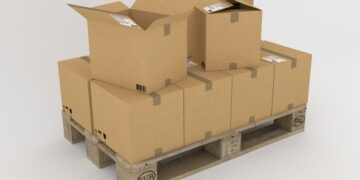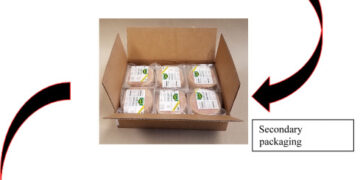Eco-Friendly Packaging
The world is waking up to the dire need for sustainability in all aspects of life. With the growing concern for environmental preservation, the packaging industry is being reimagined with a focus on eco-friendly materials. “Eco-friendly” packaging materials are those that are made from renewable, biodegradable, and compostable sources, and are designed to minimize the impact on the environment. These materials are gaining popularity in the packaging industry as businesses look for ways to reduce their carbon footprint and contribute to a sustainable future.
The rise of eco-friendly packaging materials can be attributed to several factors, including consumer demand, government regulations, and advances in technology. Consumers are becoming more environmentally conscious and are demanding sustainable products that reduce waste and carbon emissions.
As a result, businesses are under pressure to adapt to changing consumer preferences and find sustainable packaging solutions. Additionally, governments around the world are implementing regulations and policies that aim to reduce waste and promote sustainability. These regulations are creating incentives for businesses to adopt eco-friendly packaging materials.

Advances in technology have also played a significant role in the rise of eco-friendly packaging materials. New materials are being developed that are more sustainable, durable, and cost-effective than traditional packaging materials. For example, plant-based plastics, such as those made from corn starch or sugarcane, are biodegradable and compostable, making them a more sustainable alternative to petroleum-based plastics. Similarly, paper-based packaging materials are being developed that are made from sustainable sources and are fully recyclable and biodegradable.
Plastics
One of the most popular eco-friendly packaging materials is biodegradable plastics. These are made from plant-based sources and are designed to break down naturally over time. Biodegradable plastics have gained popularity as an alternative to traditional petroleum-based plastics, which can take hundreds of years to decompose and contribute to environmental pollution. Biodegradable plastics can be used for a variety of packaging applications, including food packaging, shipping materials, and retail packaging.
Paper
Another popular eco-friendly packaging material is paper. Paper is a renewable resource and can be easily recycled, making it a sustainable alternative to plastic packaging. Paper packaging materials are also biodegradable, meaning they can break down naturally over time without harming the environment. Additionally, paper-based packaging materials can be customized to meet specific packaging needs, making them a versatile and sustainable option for businesses.
Other eco-friendly packaging materials include compostable plastics, recycled plastics, and plant-based materials. Compostable plastics are designed to break down quickly in a composting environment, making them a sustainable option for food waste and other organic materials.
Recycled plastics are made from post-consumer waste and can be used to create new packaging materials, reducing the need for new plastic production. Plant-based materials, such as bamboo or hemp, are also being used to create sustainable packaging solutions that are biodegradable and compostable.
Benefits
The benefits of eco-friendly packaging materials are numerous. For one, they help to reduce waste and pollution in the environment. Traditional packaging materials, such as plastics, can take hundreds of years to decompose and contribute to environmental pollution.
Eco-friendly packaging materials, on the other hand, are designed to break down naturally and minimize the impact on the environment. Additionally, eco-friendly packaging materials can be recycled or composted, reducing the amount of waste that ends up in landfills.
Another benefit of eco-friendly packaging materials is that they help to reduce carbon emissions. Traditional packaging materials, such as plastics and aluminum, require significant amounts of energy to produce and transport
This energy consumption contributes to greenhouse gas emissions and climate change. Eco-friendly packaging materials, on the other hand, are made from renewable sources and require less energy to produce and transport, reducing the carbon footprint of businesses.
Finally, eco-friendly packaging materials can help businesses to build a positive brand image. Consumers are becoming more environmentally conscious and are actively seeking out brands that prioritize sustainability. By using eco-friendly packaging materials, businesses can demonstrate their commitment to environmental preservation and appeal to consumers who prioritize sustainability. This can lead to increased brand loyalty and a competitive advantage in the market.
Despite the benefits of eco-friendly packaging materials, there are some challenges to their widespread adoption. One challenge is the cost of these materials. Eco-friendly packaging materials are often more expensive than traditional packaging materials, making it difficult for businesses to adopt them on a large scale. However, as demand for these materials increases and production processes become more efficient, the cost is likely to decrease.

Another challenge is the lack of infrastructure for recycling and composting these materials. While many eco-friendly packaging materials are biodegradable and compostable, they require specific conditions to break down properly. Without proper infrastructure for composting and recycling, these materials may end up in landfills and contribute to environmental pollution.
To address these challenges, governments and businesses must work together to promote the adoption of eco-friendly packaging materials. Governments can incentivize businesses to adopt sustainable packaging solutions through policies and regulations, such as taxes on non-sustainable materials or subsidies for eco-friendly alternatives. Businesses can also take a proactive approach by investing in research and development to create more sustainable packaging materials and exploring alternative ways to reduce their carbon footprint.
Conclusion
In conclusion, the rise of eco-friendly packaging materials is a positive development for the environment and the packaging industry as a whole. These materials offer numerous benefits, including reducing waste and pollution, lowering carbon emissions, and building a positive brand image.
While there are still challenges to their widespread adoption, the growing demand for sustainable products and advances in technology are driving innovation in the packaging industry. By working together, governments and businesses can accelerate the adoption of eco-friendly packaging materials and contribute to a more sustainable future.
















